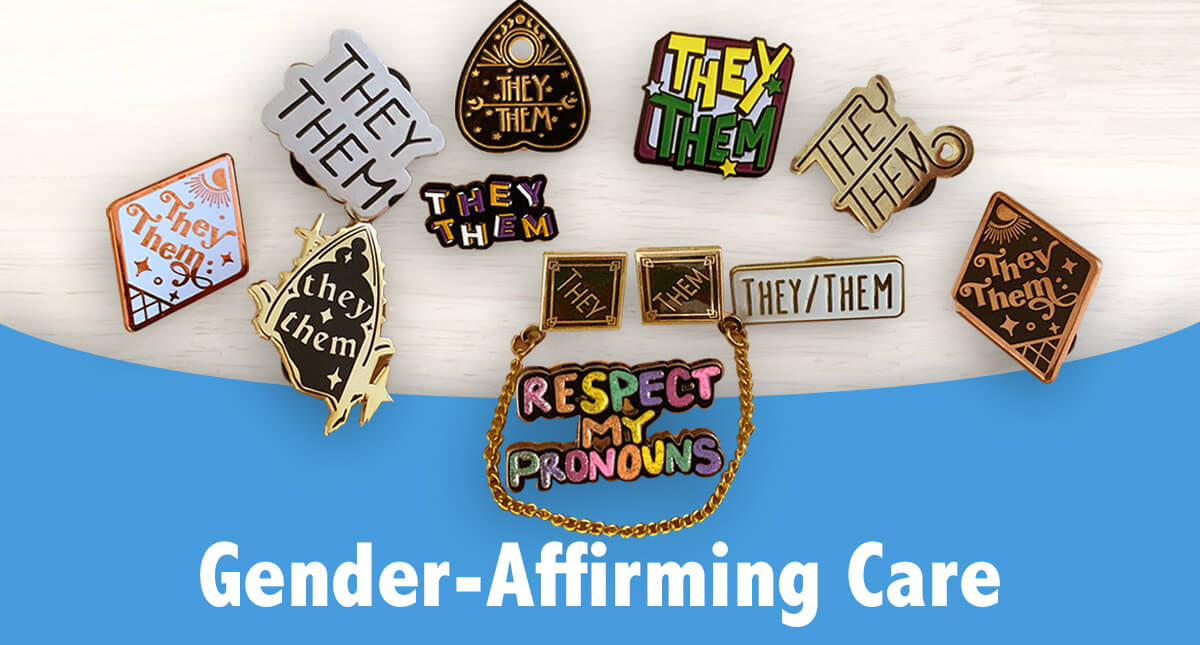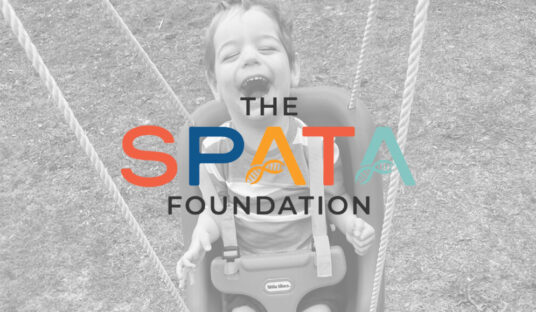
Recently, I’ve taken part in and listened to many conversations on gender-affirming care. As more horrendous anti-transgender legislation is introduced and passed impacting trans people’s access to life-saving care, I hear more people refer to gender-affirming care as if it’s some new, dangerous thing that trans folks take part in and try to force children through. But that’s not the case.
Cisgender individuals—those who identify with the gender they are assigned at birth—participate in gender-affirming healthcare all the time, whether they realize it or not. The difference is when transgender and genderqueer people need to access to healthcare, we must go through gender clinics and undergo psychiatric evaluations. Our mental health is at the highest risk if we don’t receive the healthcare we need.
It seems there is a much needed shift in how people talk about what gender-affirming care actually is. Let me break it down.
WHAT is gender-affirming care?
Gender-affirming care encompasses a wide range of services for transgender people or individuals whose gender identities do not match their gender assigned at birth—including medical care, mental health care, social work and even legal help. While the media LOVES to focus primarily on surgical procedures, there are many other ways people can receive gender-affirming care that does not involve surgery. Chances are you have received some form of gender affirmation today.
Gender affirmation has been around as long as the concept of gender. But in recent years, it is discussed almost exclusively in relation to transgender and gender non-conforming people, magnified by our rights being in jeopardy in so many states. However, it is not exclusive to trans and genderqueer people. Affirming one’s gender is simply what we do to help our outside match what’s inside.
WHO needs gender-affirming care?
We all do! We all take part in affirming our gender, whether or not it is on a medical level. It’s a big deal in the trans community because we, more often than not, traditionally have not received the gender affirmation we identified with as children and teenagers. When we receive the gender affirmation we deserve, it feels like a major hurdle we have overcome. (cuz it is!) But it doesn’t mean it is not important for cisgender people.
HOW does it work?
We all use methods like these in our everyday lives to feel good in our bodies and about our gender. It can be as simple as putting on makeup, committing to a workout regimen or getting a different haircut. For trans and genderqueer individuals of all ages, transition usually starts socially—changing what name they go by, what pronouns they use and how they visually present themselves. Some will go on to seek other methods like therapy, gender-affirming hormones, and yes, in some cases, surgery.
These procedures are not exclusive to trans and genderqueer people. Cisgender people partake in all of these methods for their own care without a second thought. Whether that’s in the form of hormonal birth control, hair transplants, fillers, calf or pectoral implants, breast augmentations…the list goes on.
I feel it is also important to address gender-affirming care when it comes to children, since trans and genderqueer youth are at the center for many healthcare and legislation bans. Hormones and surgery are generally not an option, except in the few cases where it is a matter of life and death. When an individual begins to transition socially, many seek the help of a therapist and/or a psychiatrist. If necessary, some will use hormone blockers, which are NOT the same as actual hormones. Hormone blockers simply serve to suppress the body’s release of sex hormones, which allows for effects such as improving mental well-being, reducing depression and anxiety, increasing social interactions with other children and even eliminating the need for some surgeries in the future.
Fun fact: Hormone blockers are commonly used for cisgender children with conditions such as central precocious puberty, which is when a child’s body starts to produce sex hormones too early—usually before age nine.
WHY does this matter?
For many people, perception is reality. And right now, because of the media and political agendas, what is being seen by many people is this depiction of gender-affirming care is exclusively depicted as a form of extreme, irreversible medical transition that is specifically for trans people. Yet, as previously mentioned, cisgender individuals also participate in gender-affirming care every day—the issue is clearly not with the socialization methods or medical procedures.
As a trans nonbinary person, my transition has included changing how I dress, how I cut my hair and SO much of it has been about taking care of my mental health. (Not to mention the purchase of way too many cute pronoun pins.) While I have set plans to get medical procedures that will alter my physical appearance, that has felt like one of the smaller steps in my journey. Allowing myself to come out and be who I am was and is the most important step thus far. While I know my experience is just one of many, I do think that most, if not all, of transgender transitions have relied so much on our mental health, and the constant alienation and dehumanization that we, transgender and gender non-conforming folks, go through on a daily basis doesn’t help.
Now I turn to you. Together, we have the power to change this narrative and show that gender-affirming care, in all its forms, is necessary and done by all of us—and therefore, should be accessible to everyone.
This article was orginally published on LinkedIn by Emma Waters, Art Supervisor.
Perspectives

Spectrum Science
A Page by Page Summer Reading Challenge

Spectrum Science
Prioritizing Your Mental Elf in 2024

Spectrum Science
Spectrum Leaders Give 2024 Predictions for MM+M

Spectrum Science
Spectrum Science Acquires Continuum Clinical, Amplifying Patient Recruitment Capabilities

Spectrum Science
Rare Disease Day: Educate and Advocate for SPATA5 and SPATA5L1
Perspectives




